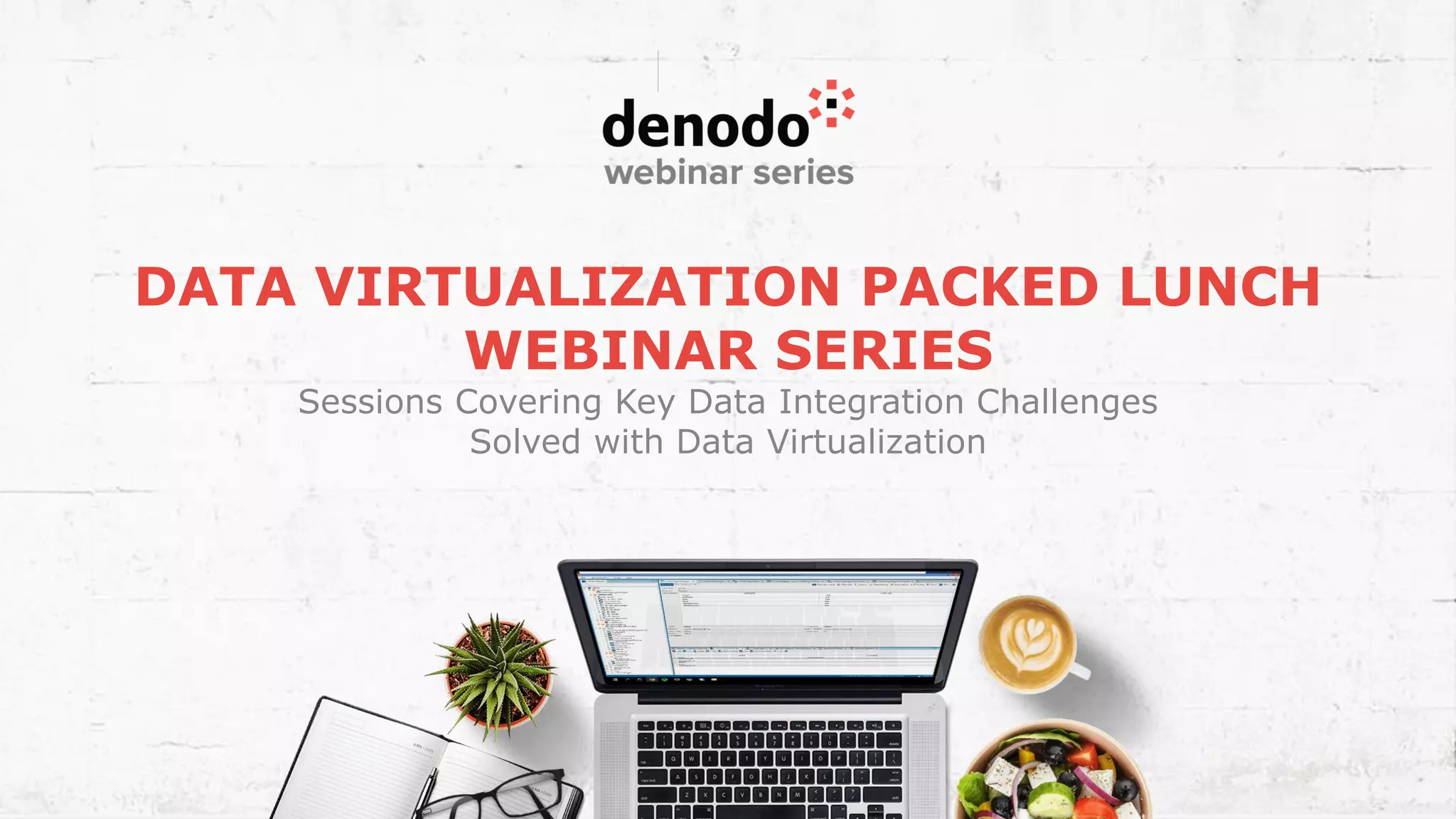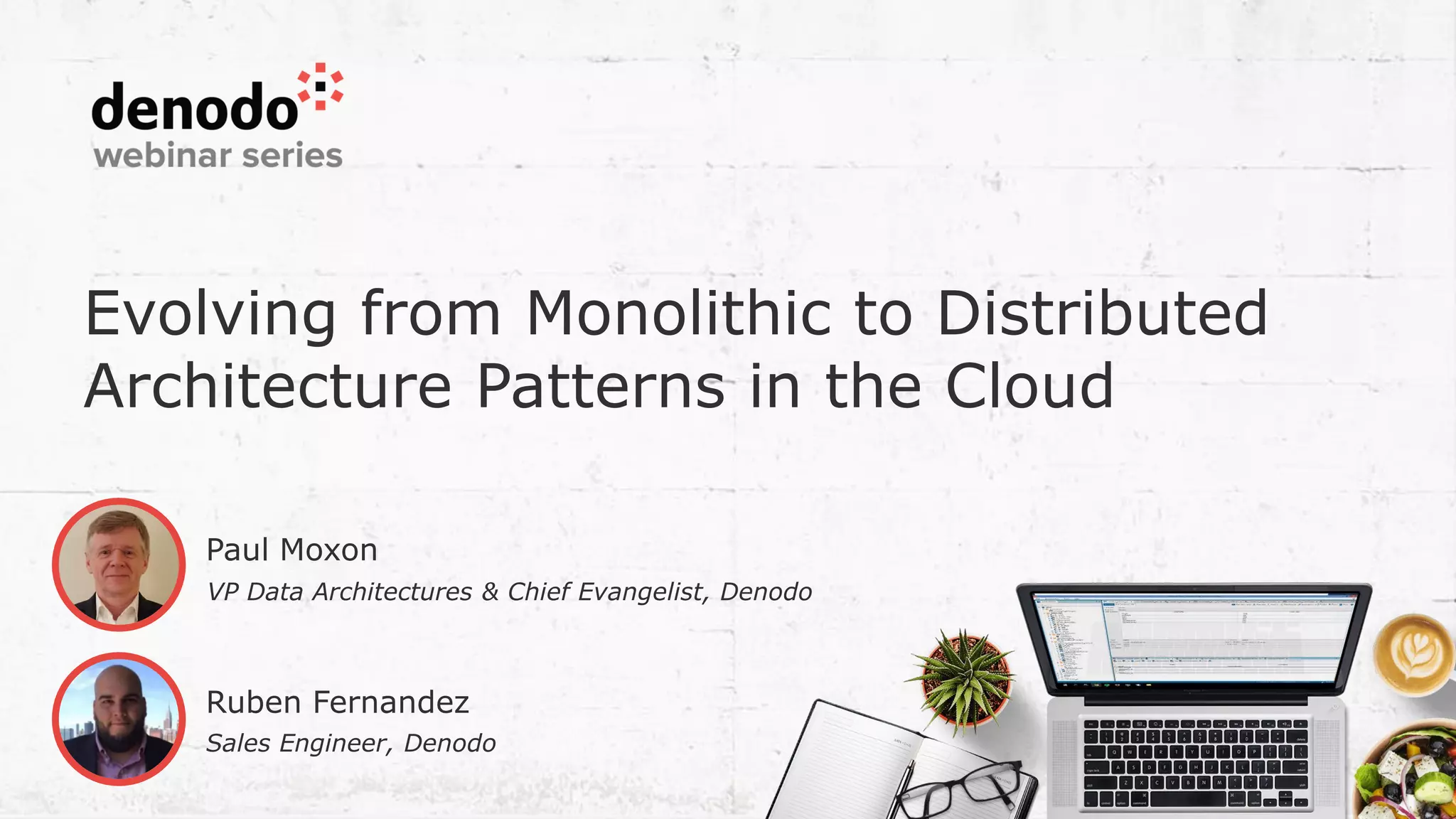The document discusses a data virtualization webinar focusing on overcoming data integration challenges associated with cloud migration and modernization. It highlights the evolution from monolithic to distributed architecture, customer case studies, and the benefits of using Denodo's data virtualization platform to improve data access and minimize disruption during cloud transitions. Key topics include application modernization, multi-cloud strategies, and the importance of hybrid data integration to avoid silos and maximize cloud benefits.



































